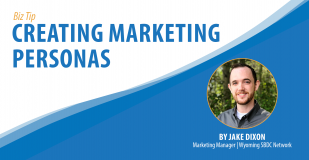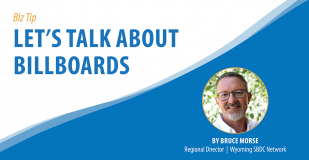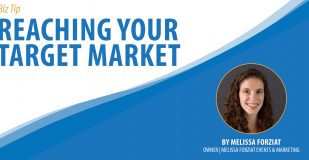Traditional marketing activities include advertising, publicity, and sales — approaches that are certainly not going away. But those outward-facing strategies join today’s inbound marketing strategies to bring targeted customers into your business, give them a reason to stay with you, and encourage them to return again and again.
Inbound marketing’s model is called the flywheel, and represents an ongoing relationship with a customer instead of the goal of a traditional marketing approach to just get the sale. Let’s look at the basic components of the flywheel model (other models vary in their level of detail):
Attract:
Instead of a shotgun, flood-all-the-channels-you-can-afford-to advertising approach, use targeted methods to attract the customers most likely to buy. Use social media tools to narrow your audience, attend networking events where your clients are most likely to be, contribute content to local media and online forums. Become known as an expert and a resource within your market.
Engage:
Once you’ve brought a customer to your web site, storefront, or office, engage their interest by communicating your added value position. What makes you stand apart as either a solution to a problem or an enhancement to a similar product or service? Whether your business is a product or service, provide demonstration videos, testimonials, or product samples. Engage your customer’s personal values with social impact statements and community engagement examples. Show your potential customer that your values are their values.
Delight:
Here’s where you keep them coming back. First, and most importantly, make sure your product or service meets or exceeds both your promises and your customers’ expectations. Then, stay in touch — not only by alerting customers to specials and sales — but by inviting them to special events, asking for feedback, and highlighting new offerings and value-added services. The Delight phase is a continuation of a conversation, not the closing of a sale.
In Conclusion
Effective marketers have been doing inbound for decades; someone just decided to slap a name on it and try to spread the word to others. The educational publishing company I worked for used inbound strategies for years: offering free shipping, providing free professional continuing education credits, and giving our customers free access to educational consultants were just a few of the ways we attracted customers and continued a relationship with them. Think about ways you can keep your customers moving within that flywheel and serving them in the long term.
If you search “Inbound Marketing” online, the highest ranked returns are firms trying to sell software tools for inbound implementation, mostly through social media, customer relationship management, and email marketing. Maybe you’re interested in those services, but given the nature of the small businesses we serve, good old-fashioned one-on-one relationship building is probably all you need to become an effective inbound marketer.
To learn more about inbound marketing strategies and to come up with a plan, contact your local Wyoming Small Business Development Center (SBDC) Network advisor for no-cost, confidential assistance by clicking here.
About the Author: Paul spent 25 years with an entrepreneurial-minded small business in the educational publishing market that attained an international footprint and experienced sustained, substantial growth. As a long-time member of the executive team with LinguiSystems, Inc., he served as Editor-in-Chief and Chief Marketing Strategist. Johnson most recently held the position of Instructional Technology Educational Specialist with University of Wyoming Extension developing and administering all of Extension’s online programmatic and educational efforts.






